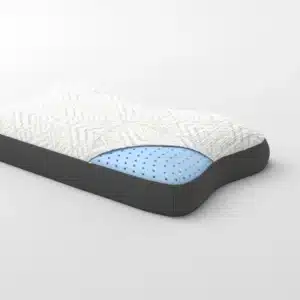The Definitive Guide to Mirtazapine for Sleep Effectiveness
How Effective is Mirtazapine for Sleep?
If you’ve found yourself searching for information on mirtazapine for sleep, you’re likely seeking clarity on its effectiveness. Here’s a summary of what you need to know:
Effectiveness: Clinical evidence suggests that mirtazapine can enhance sleep quality and expedite the process of falling asleep.
Sleep Architecture: It has been found to increase deep sleep (slow-wave sleep) while potentially diminishing REM sleep.
Side Effects: Commonly reported side effects include drowsiness, weight gain, and dry mouth.
Initially developed for the treatment of major depressive disorder (MDD), mirtazapine has garnered attention for its off-label use in addressing sleep disturbances. Healthcare providers may recommend it when traditional sleep medications are inappropriate due to concerns over addiction or tolerance.
At Yawnder, our mission is to provide you with clear, actionable information to help improve your sleep. My name is Ben Trapskin, and like many of you, I have struggled with sleep-related issues until discovering effective solutions. My goal is to clarify the intricacies of various sleep aids, including mirtazapine for sleep, empowering you to make informed choices.
Now, let’s delve deeper into understanding mirtazapine and its mechanisms for improving sleep.
Understanding Mirtazapine
Mirtazapine, commonly known by its brand name Remeron, is an atypical antidepressant. It primarily treats major depressive disorder, but its off-label uses extend to anxiety and sleep disturbances.
How Mirtazapine Works
Mirtazapine’s unique mode of action sets it apart from traditional antidepressants. Instead of the reuptake inhibition mechanism seen in SSRIs and SNRIs, mirtazapine enhances the release of key neurotransmitters, including serotonin and norepinephrine.
– Neurotransmitter Function: Chemicals in the brain transmit signals that affect mood, sleep, and appetite. Serotonin is especially critical for regulating these functions.
– Dopamine Boost: Mirtazapine’s ability to block certain neurotransmitter receptors enhances the levels of serotonin and norepinephrine, boosting mood and alleviating symptoms of anxiety and depression.
These properties make mirtazapine particularly beneficial for those experiencing insomnia related to depression.
Mirtazapine for Sleep: Key Benefits
Mirtazapine’s distinct properties offer several advantages for individuals struggling with sleep issues. Here’s how it enhances sleep quality:
Sedative Effects
Mirtazapine’s ability to block histamine receptors contributes significantly to its sedative effects, making it easier for many users to drift off to sleep more quickly.
Reducing Sleep Latency
Sleep latency is the time it takes to transition from full wakefulness to sleep. Initial studies indicate that mirtazapine can significantly shorten this duration, often showing effects within just a couple of days.
Improving Sleep Quality
Research indicates mirtazapine not only helps individuals fall asleep faster but also enhances the overall quality of sleep. Users typically report fewer awakenings throughout the night, resulting in more restorative rest.
Enhancing Slow-Wave Sleep
Slow-wave sleep is vital for physical and mental rejuvenation. Mirtazapine has been shown to increase the duration of this restorative sleep phase, further contributing to improved sleep quality.
Modifying REM Sleep
While increasing slow-wave sleep, mirtazapine slightly reduces REM sleep. This reduction can be advantageous for individuals experiencing depression, as excessive REM sleep has been associated with depressive symptoms.
Research Findings on Mirtazapine
A comprehensive review of 23 studies highlighted that mirtazapine consistently improves various sleep parameters. Among the 15 studies assessing sleep quality, all reported progress when patients were administered mirtazapine.
In summary, mirtazapine for sleep not only facilitates falling asleep more rapidly but also improves sleep quality and architecture. These benefits make it especially valuable for those whose insomnia is tied to underlying mental health issues.
Conclusion
In summary, mirtazapine has demonstrated significant effectiveness for enhancing sleep quality, particularly in individuals facing insomnia. While it holds the promise of rapid and substantial benefits, it is important to approach it mindfully. Always consult with a healthcare provider for advice tailored to your individual needs.
To ensure sustained sleep improvement, consider integrating lifestyle changes and exploring therapeutic approaches like Cognitive Behavioral Therapy for Insomnia (CBTi) alongside mirtazapine. Yawnder is dedicated to supporting you on this journey, emphasizing a comprehensive and holistic approach to sleep health. Prioritize your rest, and you’ll be well on your way to better overall health and well-being.

















